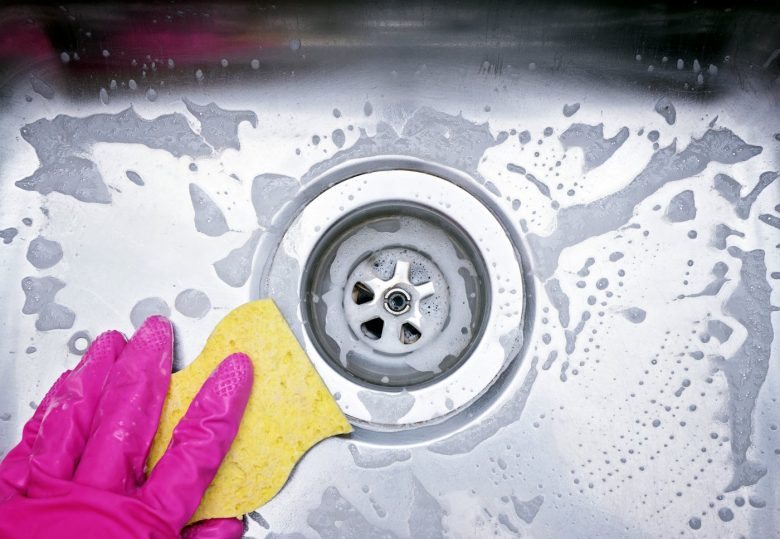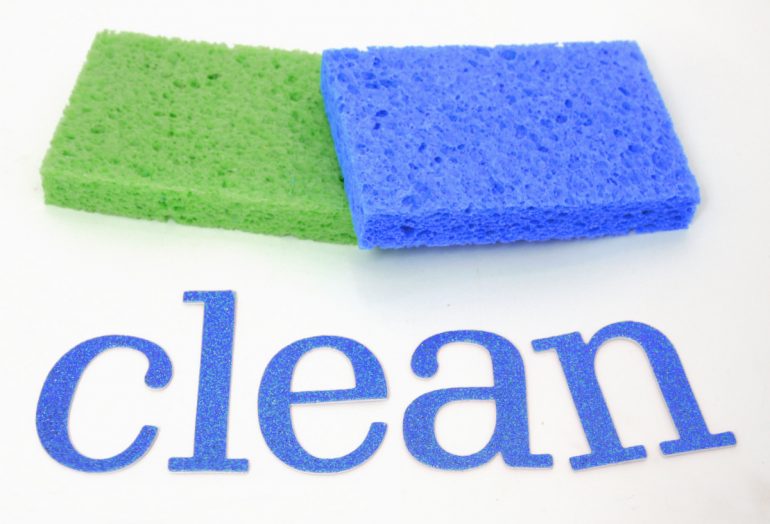How often do you really need to clean your kitchen sponges, and what’s the best way to do it? Get some tips here.
Cleaning the cleaner
Anyone who uses a sponge to wash dishes — and especially if you also use it to wipe down countertops or the kitchen table — should be aware of how much icky stuff can live in that sponge.
The warm, wet, food-laden spongy environment is a bacterial colony’s dream come true. It’s kind of scary to think that we’re using those same sponges to “clean” stuff — like dishes and other food surfaces.
It’s no small wonder that tests have shown that many of us are spreading around lots of Escherichia coli and Staphylococcus aureus (aka e coli and staph), two of the most common types of foodborne bacteria.
Fortunately, it’s easy to keep your kitchen sponges clean — and can be quick, too. Your best bets: microwaving them or running them through the dishwasher.

The test process
Microbiologists at the ARS Food Technology and Safety Laboratory in Beltsville, Maryland soaked sponges for two days in a room-temperature solution of ground beef and other substances to make the sponges laden with bacterial microbes — in the neighborhood of 20 million per sponge.
Then, they treated each sponge with one of five commonly-used cleaning methods.
The first three methods — soaking them for 3 minutes in a 10% bleach solution, or soaking for 1 minute in lemon juice or deionized water — killed only between 37% and 87% of the bacteria, and between 6.7% and 63% of yeasts and molds. That’s not nearly enough to consider a sponge clean.
What did work? Heating a wet (clean-rinsed) sponge in a microwave for at least one minute (but not more than two), and putting a sponge in a dishwasher that operates with a drying cycle.
The researchers found that nuking sponges killed 99.9999 percent of the bacteria present, and running them through the dishwasher (with heat drying) killed 99.9998 percent of the bacteria. As a bonus, those sponges retained far less than one percent of their yeasts and molds.
If you do microwave your sponges, keep three things in mind.
First, be sure the sponge doesn’t have any metal in it (such as wire mesh or a steel-wool side).
Second, ensure the sponge is wet before you put it in the microwave — it could be a fire hazard otherwise.
Third, be very careful when removing the sponge from the microwave, because it will be very hot and generate a lot of steam.
Clean and sanitize
So is this all you need to do? Not necessarily. Amarat Simonne, PhD, and Associate Professor of Food Safety and Quality at the University of Florida says that in order for the sanitizing process to be effective, the sponges (or dishcloths) must be cleaned first.
Cleaning your sponge or cloth after each use removes the source of nutrients for microbial growth, while sanitizing the sponge/cloth every other day reduces the number of bacteria and other germs so that they remain low.
Before you handle the sponge again after cleaning, make sure your hands are clean, so you’re not immediately recolonizing it with gross stuff.
Another smart practice is to avoid the worst of the bacteria. Instead of using a sponge, use (and then immediately throw away) paper towels to clean up any spilled juices from meat or poultry, and keep your sponge or cleaning cloths out of the sink and/or puddles of water when they’re not in use.









